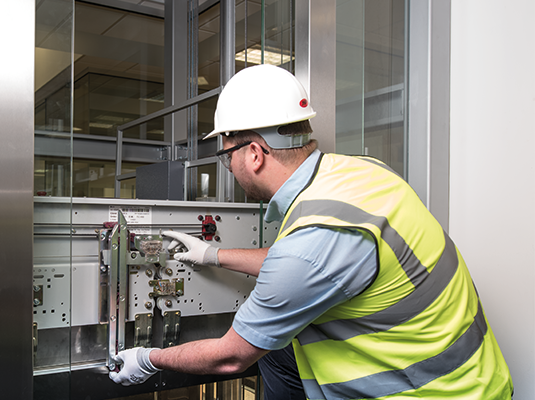Leading Lift Repair Companies Near Me for Dependable Maintenance Services
Leading Lift Repair Companies Near Me for Dependable Maintenance Services
Blog Article
Comprehensive Guide to Elevator Systems and Their Maintenance
Navigating the elaborate world of lift systems and their upkeep is a task that requires accuracy and understanding. From the various kinds of lift systems in use to the careful adherence to safety laws, the maintenance of these vertical transport gadgets is a diverse endeavor. As buildings skyrocket higher and innovation advancements, the requirement for a comprehensive understanding of elevator systems ends up being increasingly essential. Join us as we decipher the intricacies of lift maintenance, discovering usual concerns, best techniques, and advanced innovations that shape the modern-day landscape of vertical transport.
Types of Elevator Solutions
The most usual kinds include hydraulic lifts, grip elevators, machine-room-less elevators, and vacuum cleaner lifts. Hydraulic elevators are ideal for low-rise structures and use a hydraulic piston to relocate the lift auto. Machine-room-less elevators are a space-saving alternative as they do not call for a different equipment space for the elevator machinery.
Each sort of lift system has its own benefits and downsides, making it crucial for structure owners and developers to thoroughly consider their particular requirements prior to choosing one of the most appropriate choice. Aspects such as building elevation, area availability, power performance, and budget restraints all play a significant duty in establishing the most effective lift system for a certain building.
Typical Upkeep Concerns
Normal maintenance of lift systems is essential to make certain smooth operation and lengthen their life-span. In spite of routine maintenance, elevator systems can still run into typical upkeep issues that require to be promptly addressed to avoid disturbances in solution. Regular assessments and aggressive maintenance can aid recognize and resolve these common upkeep concerns before they rise and impact the general efficiency of the lift system.
Security Regulations and Conformity
Complying with rigid safety laws and guaranteeing conformity with sector requirements are critical for preserving the functional honesty of elevator systems. Elevators are subject to a comprehensive collection of security regulations to protect guests, upkeep personnel, and the public. Regulatory bodies such as the Occupational Safety And Security and Health And Wellness Administration (OSHA) in the United States and the European Lift Association (ELA) in Europe establish standards that cover various elements of lift design, upkeep, operation, and installment.
Compliance with these regulations is not only a legal requirement yet also a moral responsibility for structure owners and lift maintenance business. Failure to fulfill security criteria can cause fines, lawful liabilities, and, most importantly, jeopardize the safety and security of people utilizing the lift. Routine inspections, upkeep checks, and adherence to safety protocols laid out in the guidelines are necessary to make sure the secure and efficient operation of lift systems. By prioritizing safety and security laws and conformity, stakeholders can promote the trust of the public and reduce prospective dangers related to elevator usage.
Ideal Practices for Maintenance

One more essential best practice is to without delay resolve any type of uncommon noises or noted problems to protect against additional damage. Implementing a proactive technique to upkeep can save money and time in the lengthy run by avoiding expensive repair work or replacements. Structure owners should also consider purchasing innovation upgrades to enhance the effectiveness and security of their elevator systems. By complying with these best practices, elevator systems can run efficiently and securely, providing trustworthy vertical transport for passengers.

Advanced Technologies for Performance
Carrying out cutting-edge technologies in elevator systems can substantially boost operational effectiveness and passenger experience. These systems permit guests to input their desired flooring before entering the lift, which after that routes them to the most effective auto.
Furthermore, the combination of smart sensors and predictive upkeep capacities has actually transformed elevator upkeep. These sensors can detect potential issues prior to they rise, making it possible for proactive upkeep treatments and lessening downtime. Furthermore, using regenerative drives and energy-efficient elements helps in reducing power usage and operating costs in elevator systems.
Additionally, the implementation of cloud-based monitoring and remote diagnostics permits for real-time tracking of elevator efficiency and instant troubleshooting of any kind of malfunctions. This proactive technique not only boosts system reliability however also improves the total individual experience by making sure smooth and continuous lift procedures.
Conclusion
To conclude, understanding the various sorts of elevator systems, usual upkeep concerns, security laws, finest maintenance techniques, and progressed innovations for effectiveness is crucial for making certain the smooth operation of elevators. lift repair companies near me By adhering to safety and security policies and carrying out ideal methods for maintenance, building proprietors can lengthen the life expectancy of their lift systems and make certain the safety of travelers. It is necessary to remain updated on the most current improvements in lift innovation to boost efficiency and reliability.
The most typical types include hydraulic elevators, traction elevators, machine-room-less elevators, and vacuum elevators. Hydraulic elevators are suitable for low-rise structures and use a hydraulic piston to move the elevator vehicle. Machine-room-less elevators are a space-saving alternative as they do not call for a different machine area for the elevator machinery. Routine assessments and positive maintenance can help determine and solve these typical maintenance issues prior to they rise and influence the total performance of the elevator system.

Report this page